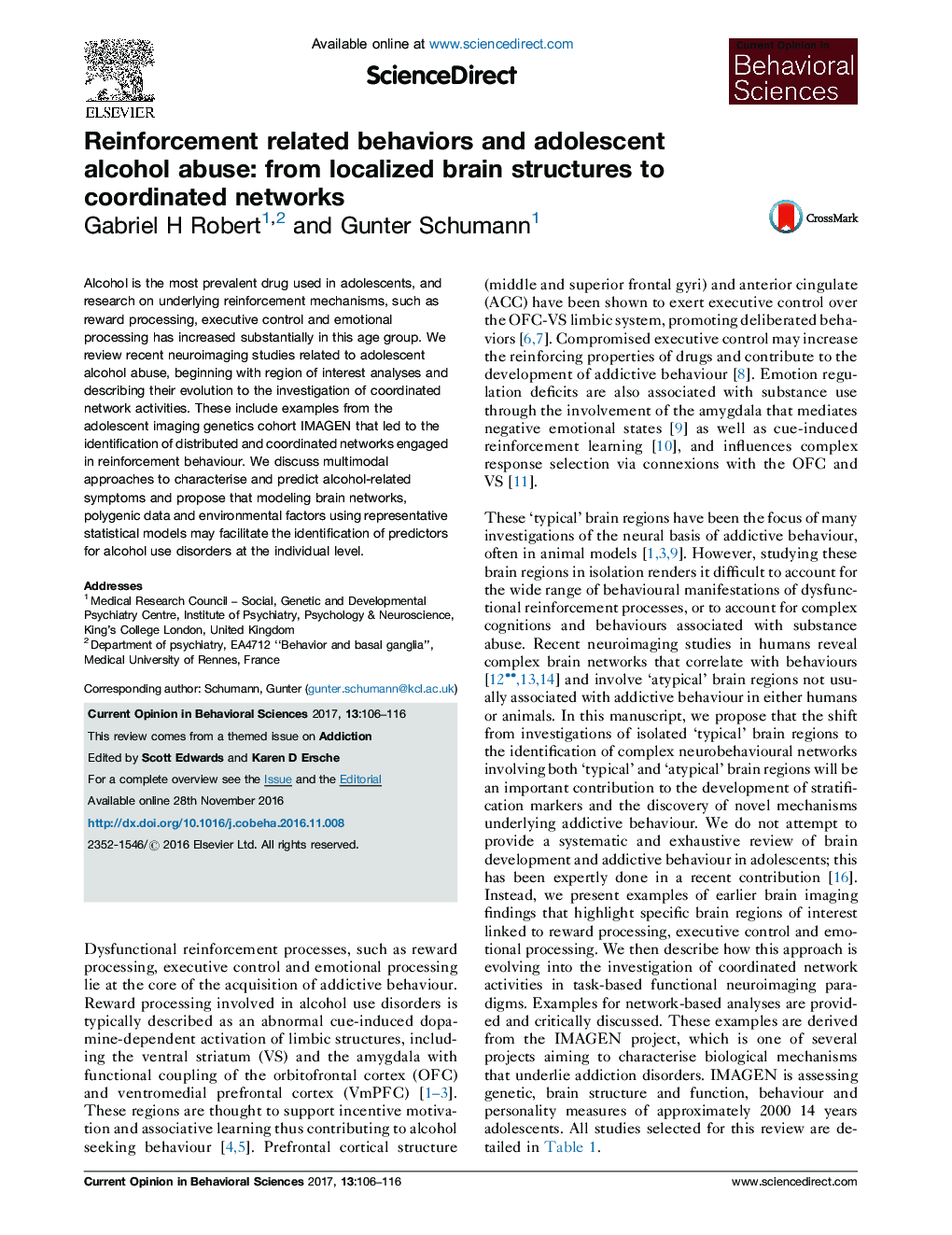| Article ID | Journal | Published Year | Pages | File Type |
|---|---|---|---|---|
| 6260321 | Current Opinion in Behavioral Sciences | 2017 | 11 Pages |
â¢Data driven approaches reveals new brain structures related to reinforcement.â¢Reinforcement related disorders in adolescence are perceived as network-based.â¢Multimodal and multivariate approaches promise to stratify subjects at risk for alcohol disorders.
Alcohol is the most prevalent drug used in adolescents, and research on underlying reinforcement mechanisms, such as reward processing, executive control and emotional processing has increased substantially in this age group. We review recent neuroimaging studies related to adolescent alcohol abuse, beginning with region of interest analyses and describing their evolution to the investigation of coordinated network activities. These include examples from the adolescent imaging genetics cohort IMAGEN that led to the identification of distributed and coordinated networks engaged in reinforcement behaviour. We discuss multimodal approaches to characterise and predict alcohol-related symptoms and propose that modeling brain networks, polygenic data and environmental factors using representative statistical models may facilitate the identification of predictors for alcohol use disorders at the individual level.Current Opinion in Behavioral Sciences 2017, 13:106-116This review comes from a themed issue on AddictionEdited by Scott Edwards and Karen D ErscheFor a complete overview see the Issue and the EditorialAvailable online 28th November 2016http://dx.doi.org/10.1016/j.cobeha.2016.11.0082352-1546/© 2016 Elsevier Ltd. All rights reserved.
